 |
||
|
||
| ||
By Vladimir Romanchenko (lone@ixbt.com)
Time goes on, and users understand that computers may be of different colors, not just gray. PC can be portable, pocket-size or built in into cars; it can be wirelessly connected to the Internet 24/7; and it can be black, green and even roundish! Earlier PC functionality was the most important issue for users; today it's different - many pay attention primarily to PC size and mobility, whether it matches the interior and whether it's possible to establish the Internet connection from all possible points. Modders were first to try to change the PC appearance. Their ideas were soon successfully used by PC manufacturers. The number of various unusual types of PC cases for home assembling is unlimited, but the most popular kind today is barebones, also called Mini PC. A modern barebone system differs a lot from samples of 2002. Earlier such PCs were outfitted with a crippled set of features. Today it's not just an ergonomic PC of the Small Form Factor (SFF), - it also contains a full set of ports including USB 2.0 and Firewire, a DVD drive, and supports all high-performance processors and graphics cards in most cases. Moreover, the barebones dated Autumn 2003 came very close to functionality of consumer audio/video centers and are able to work in several modes simultaneously without OS booting. They also feature a universal card reader for digital peripherals and an integrated Wi-Fi interface. Well, they have everything a home user might need. At present almost all Taiwanese board makers also deal with such computers. According to the MIC data (Market Intelligence Center), modern SFFs can be divided into two classes - home computers and corporate mini systems (but not thin clients!). The Mini PC case doesn't exceed 15,000 cubic cm whatever the design and shape. The MIC data on the current sales of SFF systems is impressive: it made
1.66 M systems in 2003 which is approximately 5% of 33.18M of home
PCs sold last year, or 1.5% of the total sales of desktop PCs (110.6M).
This year Mini PCs are going to become even more popular: the expected
volume of annual deliveries will increase by 38.4% and run into 2.29M pcs,
about 1.9% of 119M new desktop PCs in 2004.
It's expected that Mini PC will be turning into a home entertainment center even faster this year - almost all systems will be a combination of a PC, a stereo system, MP3 and VCD/DVD players. Thus, the ASUS DiGiMatrix combines a home PC and a multimedia center in one typically home case. 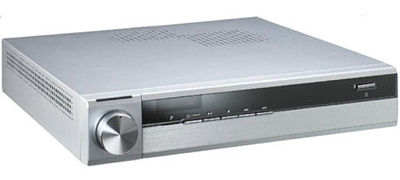
  The noiseless cute PC with the intuitive LCD display supports CD/CD-R/VCD/DVD/MP3/Karaoke/Picture-CD formats, equipped with a TV/FM tuner with recording, output to HDTV compatible displays, interfaces for digital photo cameras, PDA, mobile phones, three network interfaces (10/100 Mbit/s, 1 Gbit/s and 802.11b Wi-Fi). Besides, you can listen to Audio CDs and FM radio without booting the OS. One of the current significant players in this sphere is Shuttle. According to this company, the deliveries of the Shuttle XPC Mini PCs made around 600,000 pcs last year, and the sales volumes keep on growing up. 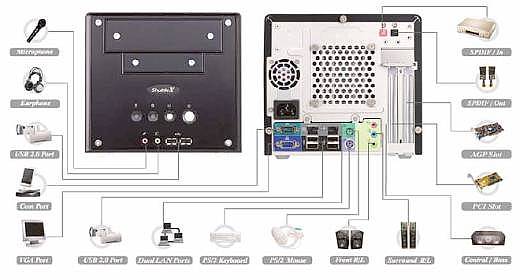 However, the SFF is not a single format of mini PCs. As soon as the prices for LCDs got moderate, various companies started developing their own versions with a built-in screen. The pioneers here are Apple and Sony - each in its niche. Apple that caught at the idea of producing integrated all-in-one desktop iMacs two years ago, at the end of 2003 released a new model with the record-breaking 20" integrated LCD supporting the resolutions up to 1680 x 1050. 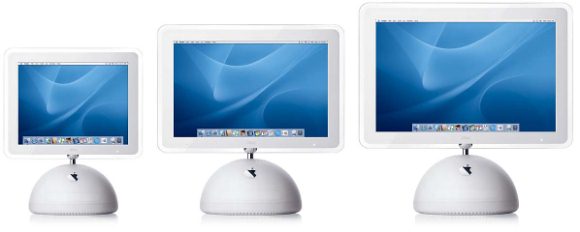 Modern 20" iMacs are based on 1.25GHz PowerPC G4 chips, bundled with a 80GB hard drive and NVIDIA GeForce FX 5200 Ultra graphics with 64 MB DDR memory. Besides, the 20" model also features 4x DVD-R/CD-RW SuperDrive, and supports AirPort Extreme and Bluetooth wireless interfaces. Well, there's everything you may need for work and entertainment, plus the elegant design. Last year, Sony also announced a wide range of new desktop PCs with an integrated LCD display. One of the most interesting solutions is the compact desktop VAIO Bio P (PCV-P101). 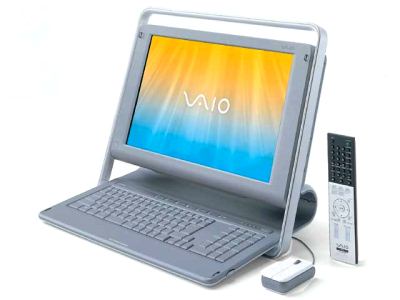
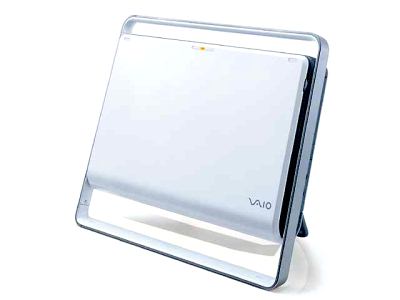 The new solution features not only a curious design and universal functionality; it's also interesting to see how the module with the keyboard and key components folds up. It's simple: you finish your work, raise the keyboard and folds it up with the display. It seems that the designers at Sony took that idea from developers of folding beds for small flats. :-) By the way, it's not a pure PC: the built-in Li-Ion battery (0.5 - 1 hour in standby mode) brings the VAIO Bio P close to DTR notebooks. However, the 17" WXGA (1280 x 768) LCD and the weight of 7.8 kg reduces this similarity. The system integrates Intel 830 chipset, 1.06 GHz Mobile Celeron, 40 GB hard drive, DVD/CD-RW drive, PC Card Type II and MemoryStick/ MemoryStick PRO card reader and Giga Pocket Engine controller with the MPEG-2 hardware decoder for recording TV programs and a remote control. In 2003 our local system assemblers also decided to give up producing only faceless PC cases, and offered designs that didn't yield to the best samples from world leaders. Thus, the desktop Centro T730 from Rover Computers is an original home multimedia center featuring TV, DVD/MP3 player, FM and PC functionality.  This model operates in two modes: AV (as a TV set, radio receiver or DVD player) and PC. The PC is based on the Intel 845PE chipset, 3.06 GHz Pentium 4 with FSB 533 MHz and Hyper Threading support; it has a 17" 1280 x 1024 ĘK LCD with built-in speakers, ATI Radeon 9000 graphics with 64 MB DDR, 120 GB hard drive, combined DVD/CD-RW drive, TV and FM tuners, remote control, modern interfaces including slots for SM/MMC/SD/MS cards and a PC Card Type ll slot typical of portable solutions. Modern concepts and production PCs of untypical designs often have elements of portable PCs. Well, ergonomics and design of notebook PCs has been developing for a long time already, and it would be foolish to ignore such experience. By the way, such original PCs are often produced by the notebook makers. One of such firms is Sotec - it brought out a whole series of unusual desktop solutions in 2003. One of its products is desktop Afina AS which combines an LCD and the case, having an optical drive and other components also provided. The basic model weighs 4.1 kg and is equipped with a 12.1" XGA LCD, Mobile Athlon XP, DVD/CD-RW drive and integrated TV tuner. 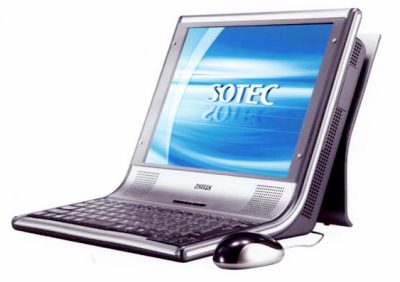 Well, we can keep on describing various queer PCs for ever and ever. Let's call it a day. What I want to point out is that performance of such systems remains an important issue but today the attention is often shifted towards design and functionality, like with other types of consumer devices. But it doesn't mean that a stylish PC can't be efficient enough. Most latest desktop solutions perfectly combine such characteristics. But time goes on, and users more and more often back away from faceless rectangular boxes, especially accounting for the upcoming BTX standard.
Write a comment below. No registration needed!
|
Platform · Video · Multimedia · Mobile · Other || About us & Privacy policy · Twitter · Facebook Copyright © Byrds Research & Publishing, Ltd., 1997–2011. All rights reserved. | |||||||||||||||||||||||||||||||||||||||||||||||||||||||||||||||||||||||||||||||||||||||||||||||||||||||||||||||||||||||||||||||||||